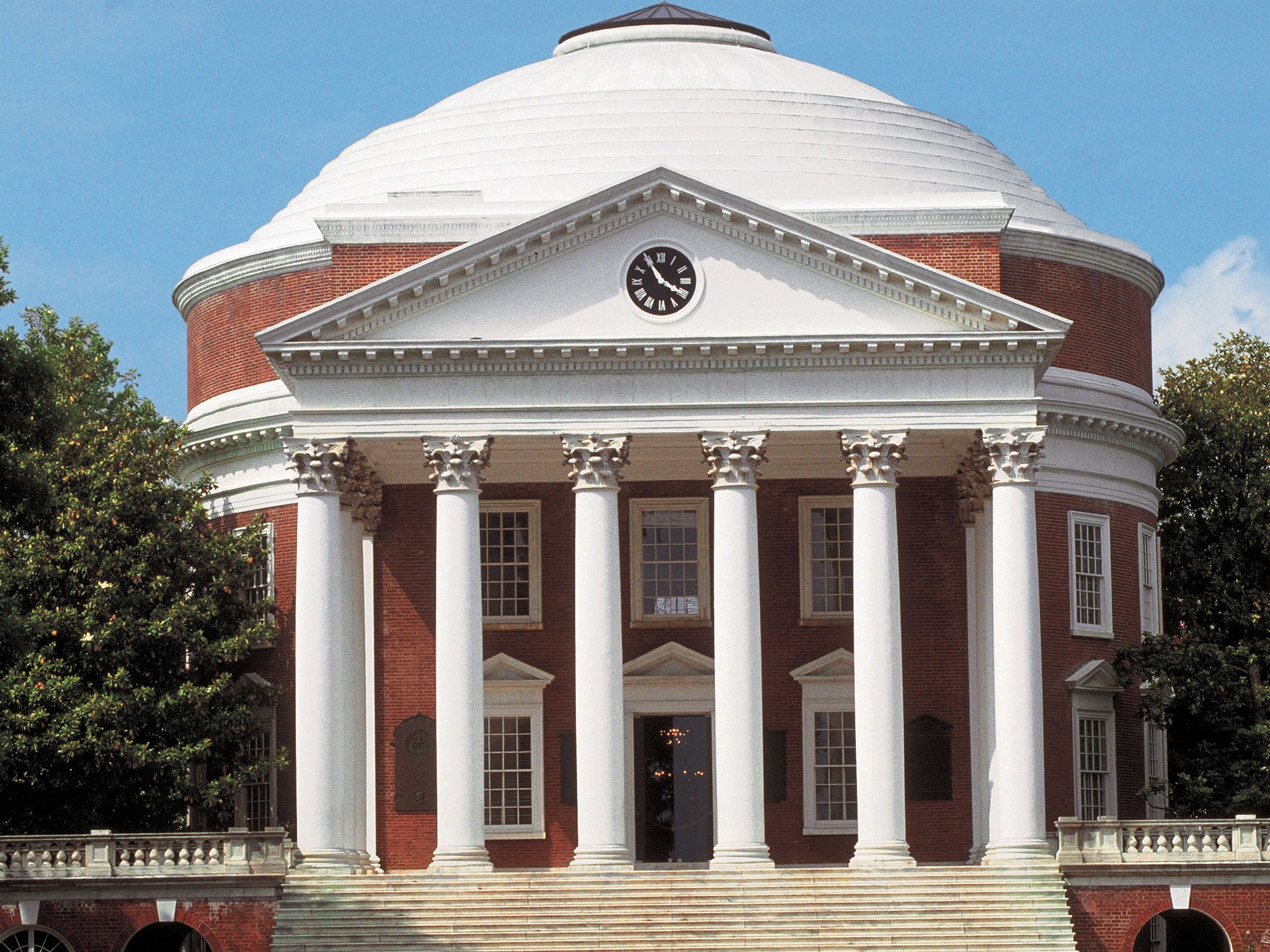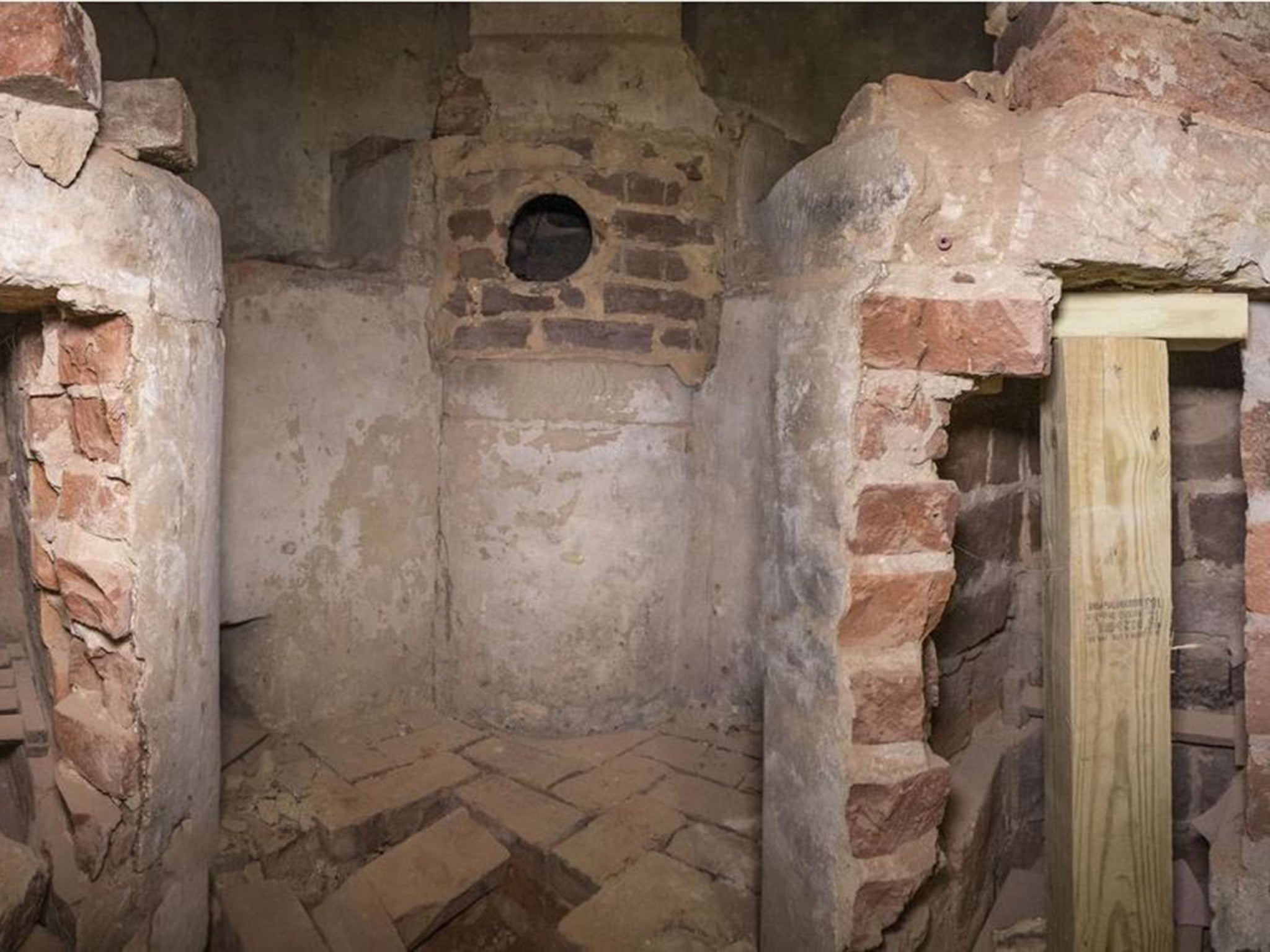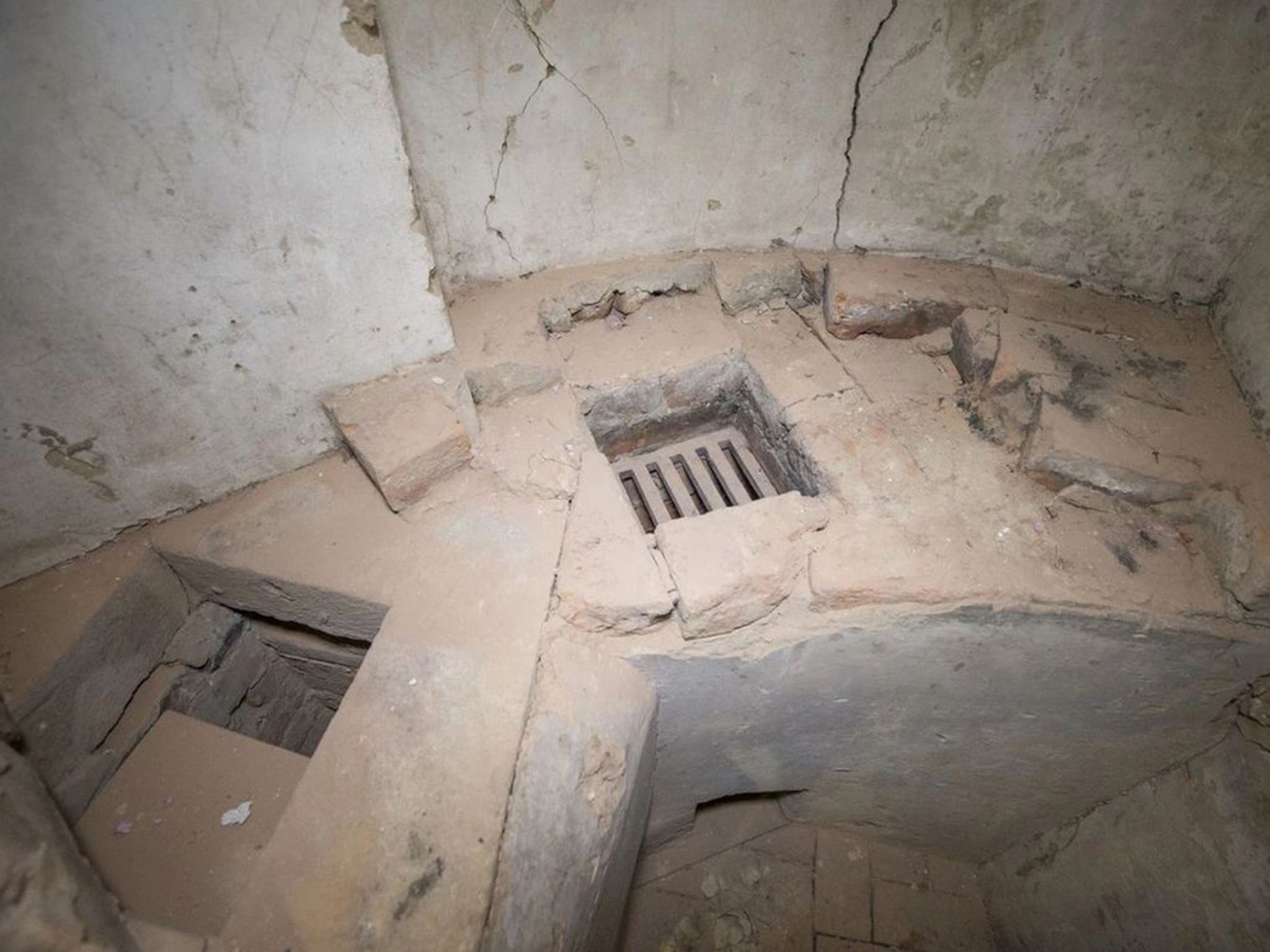America's first chemistry lab discovered accidentally in building designed by Thomas Jefferson
Renovation works on the Rotunda building at the University of Virginia unearthed the unknown room

It took an architect lying on the floor, sticking his head into a hole and looking up to realize: There was something there.
The something initially was nothing – an empty space. But an empty space in the Rotunda that Thomas Jefferson designed at the University of Virginia is something. It’s one of the most-studied buildings in the country, said Brian Hogg, senior historic preservation planner in the Office of the Architect for the University, so renowned that it is part of a UNESCO World Heritage Site. They don’t expect surprises.
And so the discovery led the workers to keep tapping, keep opening up the wall, ultimately finding something remarkable. Hidden back there was an elaborate chemical hearth designed for laboratory experiments. It was complex, with vents and multiple sources and means of controlling heat.
The hearth offers a window into the way that science was taught during Jefferson’s time and an unexpected connection to his founding vision for the university.
It had been hidden away, no longer needed and sealed into a wall in the mid-1800s, and thus protected from the fire that destroyed most of the inside of the historic building in 1895.
A Rotunda renovation project, expected to be mostly finished by the middle of next summer, was necessitated by crumbling columns and leaks. But it has led to some wonderful surprises, Hogg said, that help them better understand how the building was used.

The hearth may be the nation’s oldest surviving example of chemistry education, he said.
“It’s exciting,” said Jody Lahendro, a supervisory historic preservation architect for U-Va. Reading letters exchanged between Jefferson and John Emmet, a professor of natural history — as they emphasized the then-unusual idea of students taking part in experiments rather than just observing — “really brought me back to that time,” he said. It also personalized the university’s history.
Jefferson designed the architecture of the university in Charlottesville to fit his vision for the education there. The 10 pavilions along the Lawn were to be centers of learning where professors both taught and lived with their families, for example.
But that model didn’t work quite so well for a science class needing a lab.
So space for experiments was built into the domed building at the head of the Lawn. It was symbolic that he chose to put a library in the Rotunda, rather than a chapel as at other universities, Lahendro said. And it is notable that one level was set aside for chemistry classes.
“It really is the beginning of the teaching of science,” as one of the defining principles of a university rather than religion, he said. “The Enlightenment, changing the viewpoint of the world.”
Chemistry was a popular course of study at U-Va. At times, nearly a third of the student body was enrolled, and members of the public also came to lectures.

It was dangerous, too. Emmet, the natural history professor who started teaching at the university in 1825, suffered greatly from mishaps with chemicals — like the time his assistant forgot to properly cork a bottle of sulfuric acid and spilled it all over him, causing serious burns.
A draft report prepared for John G. Waite Associates, Architects, by Diana S. Waite cited a biography of the professor written soon after he died in his 40s:
“Dr. Emmet encountered a full share of these hazards. He met with several accidents, some of which were near proving fatal, and one of them laid him up for eight or nine weeks. On his person he bore the marks of these perils of the laboratory; but they were little heeded by him, and, when adverted to, always afforded him the occasion of some good-humoured pleasantry. His wardrobe paid dearly for the powerful agents with which it was too heedlessly brought into contact, and not unfrequently his attire wore the appearance of the sails of a ship that had just been in action.”
The university will have the hearth on display for visitors and students, with the history of the site and some of the people involved — including, as with so much that Jefferson did, the enslaved people who tended to the hearth and the classroom.
The restoration also will open up classroom space for current students, just across the hall from the chemical hearth, bringing the building back to Jefferson’s original intentions as an active center of student learning.
But there won’t be chemistry labs this time.
“You wouldn’t want to see what the Rotunda would look like with modern fume hoods,” Lahendro said.
Join our commenting forum
Join thought-provoking conversations, follow other Independent readers and see their replies
Comments